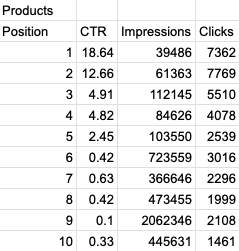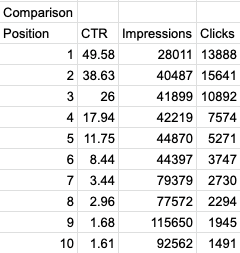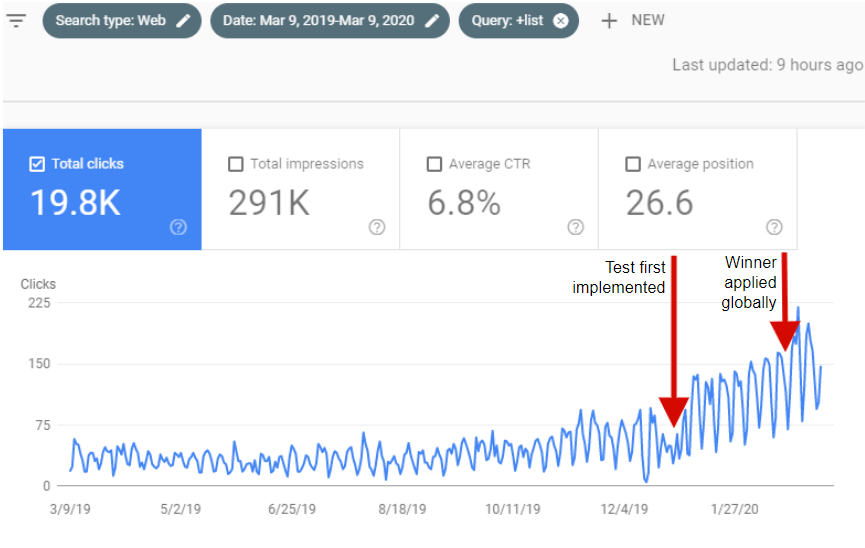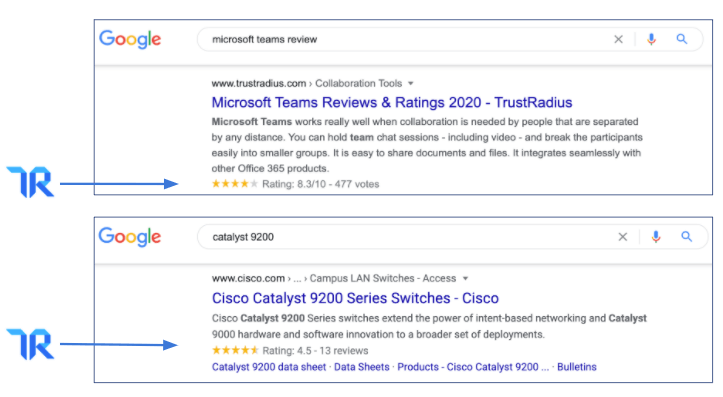
5 Ways to 3x Your Traffic with SEO
Last week I hosted a webinar explaining some of how we focused on SEO to drive 3x growth in traffic to TrustRadius that now yields us more than 1 million sessions per month to our website. It was a great event with lots of great participation from the audience. You can watch the full webinar or read through some highlights below.
Keyword Research / Relevance Is Important to Know
Keyword research isn’t dead. You need to do the time-consuming task of keyword research. For us, this was done via tools like SEMRush and Ahrefs and we then organized a ‘keyword library’ to store all relevant keywords that we deemed to be beneficial to our different audiences. Too often people do keyword research on the fly and don’t store that data to be able to judge success. Storing this in a database or spreadsheet allows you to be able to match your Google Search Console and any third party ranking data against the keywords that matter to you to know your share of voice.
It is also important to analyze all of the keyword modifiers that show up in the keywords you are targeting and those you rank well on. This can help you better understand where you are strong and weak and thus how to prioritize efforts. There are many online tools that help you to do phrase counting to see which keywords show up most frequently.
We also use SEMRush to see what percentage of keywords and traffic the keyword modifiers we care about most show up on our pages and our competitors’ pages. This allows us to see where we have opportunities to grow and steal traffic and this is a great way to benchmark your current level of success.
Dashboards Help you Track Performance
We have invested a lot of time in setting up dashboards and reporting that allow us to have multiple views into our organic traffic data. Most people only track rankings for a limited number of keywords when, in reality, you should be tracking for ALL of the keywords in your Google Search Console account as well as those from the keyword library you set up. This allows you to be able to slice and dice the data in ways that you can’t via the Search Console web interface. On a daily basis, we’re able to see trends by page type, keyword modifiers, page, keyword, etc. We use Supermetrics to pull the data into Google Sheets to share across our organization and people have real-time data at their fingertips. No more sending CSVs or other files, the data is always available for anyone to see so that writers and others can act on it as needed. We track many things such as CTR, ranking keywords, user engagement, etc. as seen in this sample dashboard:
We use conditional formatting to quickly highlight any wins or losses on a daily basis to help us cut through the noise in a dataset this big. So I encourage you to stop looking at a small subset of keyword rankings via third party tools and start putting layers on all of the data that Google Search Console provides via API. If Supermetrics isn’t for you, there are other tools like Big Metrics that give you more granular visibility into your keyword data.
Know Your CTR Curve
Search volumes mean nothing if you don’t know how to predict the CTR you’ll see from different queries. As seen in this data, lower volume keywords can drive higher volume — as it did for us — so this data is crucial to prioritizing your efforts effectively. In this example, we learned that we would yield much more traffic if we focused on driving product comparisons (product A vs product B) instead of focusing on trying to rank for a single product (product reviews).
As is often the case, we also see that improving two positions typically will yield double the traffic on a keyword level basis. So the insights from understanding the CTR curve for your pages/queries are crucial to helping prioritize efforts that will drive the most value.
Content Updates / Testing
Imagine if I told you there is a tool that allows you to add high-quality content at scale to your site with content that is keyword aligned, and this content also drives better user engagement without any editorial involvement at all. That’s one of the benefits we offer here at TrustRadius. Our site has a very large volume of high-quality user-generated content and one of the things we continually work on is utilizing that content appropriately throughout our site.
As John Mueller of Google recently addressed, Google treats UGC just like it would any other content on your site and thus it can be a great tool to drive content that will lead to more organic traffic.
An example of this can be seen on our product comparison pages. These pages pull in user-generated reviews as well as other insights from user ratings. For these pages we made modifications to the types of content that is pulled in, focusing on content that is more relevant to the products being compared. We also focused on recency and other relevant metrics to ensure that these pages had the highest quality and most keyword-relevant content for each product comparison. On top of that, we tested adding our own synthesized summary of the products in an effort to drive more featured snippets (these were very important as we see CTRs of close to 50% for these queries). This not only led to better rankings but since we focus on user testing our ongoing user surveys of these pages showed a dramatic increase in user satisfaction for the updates we made to these pages.
There are lots of changes we made to content and workflows and you can read more about that here as well as use the process docs we have for our team when writing blog content.
Title Tag Testing
We believe we should always be testing things, both for users and for search engines. An example of one test that drove improved results for us was a simple update to a portion of our page titles. We wrote up a case study on this title tag test so that you can emulate our exact method that requires no third-party tools or extra expenses.
To summarize:
- Conducting on-page SEO tests can be a low-effort, high-impact strategy to grow website traffic.
- Title tag and meta description tests are two examples of on-page SEO tests that can improve CTR and help lift traffic.
- Tracking results of title tag tests can be done in Google Analytics and Google Search Console using custom segments and filters.
- A title tag test across one major page type on the TrustRadius website led to 22% growth in sitewide traffic after implementing the winner of the test.
Technical – Ratings Schema
Another great use of TrustRadius UGC is the ability to use ratings schema to allow stars to show in the search results. We added more of this structured data to our product pages and are also now enabling our customers to do the same as seen here:
User Testing
As we know, the goal of the search engine is to give users what they want. So this has to be your goal as well. At TrustRadius we are always testing different things in a couple of ways. We do usability testing with different groups of people to see how they interact with our site. Sites like UserTesting offer a great way to do this. We also do A/B testing via Optimizely and Google Optimize. At the end of the day, if you are always improving your site experience, you are also improving your SEO. So make sure you continue to test and find ways to improve your website with the user in mind.
Conclusion
There is a lot that went into improving our site that impacted our SEO and we hope you enjoy these specific examples. Also, since you care about SEO enough to make it this far, take a look at the reviews we’ve collected for the best SEO tools to help drive success in your efforts.
Join us at our future webinars to learn more about ways to help drive improvements across your business.
Join our upcoming digital events
Leading companies like Avalara leverage social proof to make their digital marketing more effective—increasing engagement and web traffic—and they want to show you how.
Join Courtney Wendel-Stevenson, Sr. Manager, Community Engagement at Avalara and Emily Sue Tomac, Sr. Research Manager at TrustRadius, to discuss how Avalara uses customer voice to build trust with their audience and improve the performance of their digital marketing.

The Covid-19 pandemic has led to job losses, cost cutting, and reduced customer demand for many organizations. With budgets squeezed, massive transitions to remote working, and shifting customer requirements, IT and business leaders are re-evaluating their orgs in this new environment.
In this webinar, research leaders from IDC and TrustRadius will share industry data and advice from clients weathering the storm.











